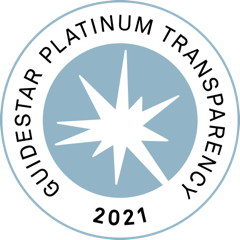IMW: Black Patients Receive Similar Front-Line Myeloma Therapy But Later Start of Therapy Compared to White Patients

African Americans are 2-3 times more likely to develop multiple myeloma compared to white individuals. In a recent Real World Data study by Ankit Kansagra, MD of UT Southwestern shared at the recent IMW conference, we learn that black and white patients are receiving similar front-line therapy, although black patients receive a later start to both their first line treatment and stem cell transplant.
The development of new therapies has exploded in multiple myeloma over the past decade. Making all myeloma treatments accessible to all patients is the goal, regardless of socioeconomic status, geography or race.
A total of 1790 myeloma patients with an active myeloma diagnosis after January 2015 in the COTA real-world database were evaluated. The study found the following:
- The African American patients were younger on average (61 vs. 66 average age)
- African American patients had longer time to first line treatment (24 months vs. 19 months)
- African American patients had longer time to first stem cell transplant (218 days vs. 185 days)
- First line treatments were similar between black and white patients
- The most common first line treatments included a proteasome inhibitor, an immunomodulator, and a steroid (like a Revlimid/Velcade/dex combination therapy)
- Similar numbers of patients received stem cell transplant as part of their first line therapy (13.9% black patients vs. 15.9% white patients)
- No significant differences were found between the time to next treatment from the first line to the second line between the two groups.
These findings suggest that frontline treatment patterns were similar by race in contemporary real-world patients treated predominately in the academic setting. Future research will identify if similar treatment patterns are happening the local oncology clinics and if similar treatment patterns drive similar outcomes by race.
African Americans are 2-3 times more likely to develop multiple myeloma compared to white individuals. In a recent Real World Data study by Ankit Kansagra, MD of UT Southwestern shared at the recent IMW conference, we learn that black and white patients are receiving similar front-line therapy, although black patients receive a later start to both their first line treatment and stem cell transplant.
The development of new therapies has exploded in multiple myeloma over the past decade. Making all myeloma treatments accessible to all patients is the goal, regardless of socioeconomic status, geography or race.
A total of 1790 myeloma patients with an active myeloma diagnosis after January 2015 in the COTA real-world database were evaluated. The study found the following:
- The African American patients were younger on average (61 vs. 66 average age)
- African American patients had longer time to first line treatment (24 months vs. 19 months)
- African American patients had longer time to first stem cell transplant (218 days vs. 185 days)
- First line treatments were similar between black and white patients
- The most common first line treatments included a proteasome inhibitor, an immunomodulator, and a steroid (like a Revlimid/Velcade/dex combination therapy)
- Similar numbers of patients received stem cell transplant as part of their first line therapy (13.9% black patients vs. 15.9% white patients)
- No significant differences were found between the time to next treatment from the first line to the second line between the two groups.
These findings suggest that frontline treatment patterns were similar by race in contemporary real-world patients treated predominately in the academic setting. Future research will identify if similar treatment patterns are happening the local oncology clinics and if similar treatment patterns drive similar outcomes by race.
about the author
Jennifer Ahlstrom
Myeloma survivor, patient advocate, wife, mom of 6. Believer that patients can contribute to cures by joining HealthTree Cure Hub and joining clinical research. Founder and CEO of HealthTree Foundation.
More on Navigating Your Health
Trending Articles




Get the Latest Multiple Myeloma Updates, Delivered to You.
By subscribing to the HealthTree newsletter, you'll receive the latest research, treatment updates, and expert insights to help you navigate your health.















